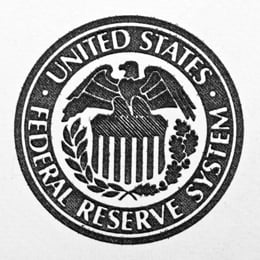 The Fed seems to realize that the message markets took from last week’s decision not to raise rates was not, in fact, the one it wanted to send. Since that decision was announced, we have seen statements from several committee members making the case that it was a “close call” and that a rate increase is still in the cards this year—probably in an attempt to mitigate the markets’ worries. What has been missing, though, is some indication of what the most important member, the chair, thinks about the whole thing. Now we know.
The Fed seems to realize that the message markets took from last week’s decision not to raise rates was not, in fact, the one it wanted to send. Since that decision was announced, we have seen statements from several committee members making the case that it was a “close call” and that a rate increase is still in the cards this year—probably in an attempt to mitigate the markets’ worries. What has been missing, though, is some indication of what the most important member, the chair, thinks about the whole thing. Now we know.
The speech
Chair Janet Yellen gave a speech last night at the University of Massachusetts that was probably the most closely watched of her career. She took pains to make several points:
- “Prospects for the U.S. economy generally appear solid.”
- “The overall economy has been expanding modestly faster than its productive potential.”
- “My colleagues and I . . . anticipate that this pattern will continue and labor market conditions will improve further.”
Key takeaways
The economy. As far as the U.S. economy goes, Yellen has planted a flag in the ground that says, at the moment, things look good. It’s not completely out of the woods yet but is moving in the right direction. Reinforcing these conclusions was the fact that the vast majority of the speech was about inflation, whereas the other part was about the Fed’s dual mandate. The real economy was mentioned only in passing and clearly wasn’t a major area of concern.
Inflation. For inflation, the speech laid out the case why, despite the persistence of low inflation, this is not actually a problem and won’t hold the Fed back from rate increases. In a surprisingly accessible argument, Yellen made a good case that inflation should be back on its way to the Fed’s target levels in the next year or so and that the current low levels are nothing to worry about.
All of this begs the question: If everything is fine, why didn’t the Fed choose to raise rates? Here, Yellen’s argument highlighted the uncertainties involved, which I personally do not find convincing given that we will always have uncertainty.
She also noted that holding rates low until the actual objectives—2-percent inflation and full employment—are met will create more problems in the future and that the right time to act is before those goals are achieved. Here, I agree, and I suspect in hindsight the Fed wishes that some of this speech had been included in the press release after the last meeting. In last night’s speech, Yellen laid out very clearly what she sees in the economy and the inflation outlook, and somewhat less clearly what that means for policy in the future. This is the sort of guidance that should have been in the release for the last meeting; it would have alleviated some of the market uncertainty.
The road ahead
Regardless, we have the information now, and markets in general seem to like what they hear. As I write this, European markets are up, as are U.S. futures. The “all clear” on both the U.S. economy and inflation outlook, combined with a determination to act slowly and deliberately with a rate increase this year, addresses the major concerns that the Fed’s previous decision left hanging. Although we still have to wait for the first rate hike, we now have a clearer road map on how we get there.


 Print
Print



